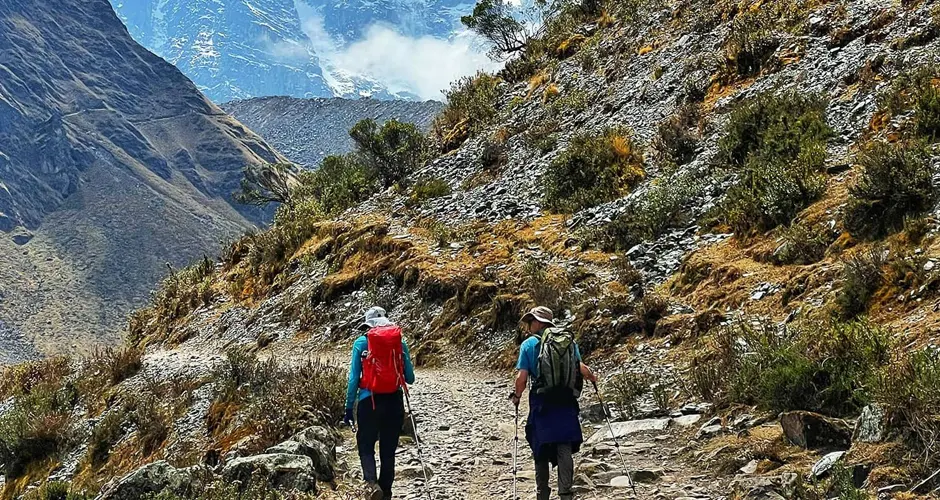
The Salkantay Trekking 2025 offers one of the most exciting and challenging adventures you can experience in Peru. As one of the most popular alternative routes to the classic Inca Trail, the Salkantay Trek will take you through some of the most stunning landscapes of the Andes, culminating at the majestic citadel of Machu Picchu. If you’re planning this incredible experience in 2025, this guide provides everything you need to know, from what to pack to what you can expect along the way.
What is the Salkantay Trekking?
The Salkantay Trekking is a multi-day hike through the breathtaking mountainous landscapes of the Peruvian Andes. Unlike the Inca Trail, no special permits are required, nor do you need to book far in advance. This trek offers a less crowded but equally spectacular alternative, with the opportunity to admire the grandeur of the Salkantay Mountain, which rises to 6,271 meters above sea level.
Why Choose Salkantay Trekking in 2025?
- Fewer crowds: While increasingly popular, the Salkantay Trek remains less crowded than the Inca Trail, allowing you to enjoy the tranquility of the Andes.
- Diverse landscapes: You’ll travel from snowy mountains to lush tropical forests, crossing valleys and rivers as you approach Machu Picchu.
- No permits required: Unlike the Inca Trail, you don’t need to secure permits months in advance, making it a more flexible option.
Itinerary for Salkantay Trekking 2025
Day 1: Cusco – Mollepata – Soraypampa
Your adventure begins with a drive from Cusco to Mollepata, where the hike starts. The first stop is Soraypampa, a campsite situated at 3,900 meters. Along the way, you’ll have the option to visit the stunning Humantay Lake, a glacial lake surrounded by towering peaks.
- Altitude: 3,900 meters
- Distance: 12 kilometers
- Duration: Around 6 hours
Day 2: Soraypampa – Salkantay Pass – Chaullay
Day two is the most challenging as you’ll cross the Salkantay Pass, which sits at 4,650 meters. This stretch offers breathtaking views of glaciers and snow-capped mountains. After the pass, you’ll descend to the camp at Chaullay, located at 2,900 meters, where the weather is much warmer.
- Altitude: 4,650 meters (highest point)
- Distance: 22 kilometers
- Duration: 8-9 hours
Day 3: Chaullay – Playa Sahuayaco – Lucmabamba
The third day takes you through the tropical forest, where you’ll pass by coffee plantations, fruit orchards, and other Andean crops. You’ll have the chance to interact with local farmers and learn about their traditions. The day ends at Lucmabamba, where you can rest and enjoy the warm jungle climate.
- Altitude: 2,000 meters
- Distance: 15 kilometers
- Duration: 6 hours
Day 4: Lucmabamba – Llactapata – Aguas Calientes
The fourth day begins with a hike along an ancient Inca path that will take you to the Llactapata ruins, offering a distant view of Machu Picchu. After exploring the ruins, you’ll descend toward the hydroelectric station, where you’ll take the train to Aguas Calientes, the base town for Machu Picchu.
- Altitude: 2,000 meters
- Distance: 14 kilometers
- Duration: 6-7 hours
Day 5: Visit to Machu Picchu
The last day is dedicated to exploring Machu Picchu, the final destination of your trek. After a short bus ride from Aguas Calientes, you’ll take a guided tour of the citadel, where you’ll learn about its rich history and architecture. After the tour, you’ll return to Cusco by train.
Preparing for the Salkantay Trekking 2025
What to Pack?
To ensure you have a comfortable and safe experience on the Salkantay Trekking 2025, it’s important to pack the right gear:
- Clothing for both cold and warm climates: As you ascend and descend the trail, you’ll face a variety of climates, from the freezing cold at the Salkantay Pass to the warm temperatures of the tropical jungle.
- Hiking boots: Make sure they fit well and are waterproof to handle changing terrains and weather.
- Sun protection: Bring sunscreen, sunglasses, and a hat, as UV radiation is intense at high altitudes.
- Reusable water bottle: Stay hydrated during the trek and contribute to sustainable tourism by avoiding single-use plastics.
- Camping gear: If you book a guided tour, equipment like tents and sleeping bags are usually included, but check with your tour provider for details.
When to Go?
The best time to do the Salkantay Trek is during the dry season, which runs from May to September. During these months, rainfall is minimal, and the weather is more stable, although nights at higher altitudes can be cold.
How to Book a Tour for Salkantay Trekking in 2025?
Booking a guided tour is the best way to ensure a smooth experience on the Salkantay Trekking 2025. Trusted agencies like Guiding Cusco Expeditions offer packages that include professional guides, porters, transportation, and meals during the trek.
By booking with a responsible tour operator, you’ll ensure that your adventure is sustainable and that local communities benefit from tourism. For more information, you can also contact us directly via WhatsApp, or follow us on Instagram.
Benefits of Doing the Salkantay Trekking
- Connection with nature: Trekking allows you to disconnect from daily life and connect with the majestic Andes and their biodiversity.
- Physical challenge: Conquering the 4,650-meter Salkantay Pass is an accomplishment few will forget.
- Cultural discovery: In addition to Machu Picchu, you’ll have the chance to explore lesser-known Inca ruins like Llactapata and interact with Andean communities.
The Salkantay Trekking 2025 is the perfect option for adventurers looking for a challenging and rewarding experience in the Peruvian Andes. With its stunning landscapes and proximity to Machu Picchu, this trek will leave you with unforgettable memories and a deep connection to both nature and Andean culture.
For more information or to book your tour, visit Guiding Cusco Expeditions, or contact us directly via WhatsApp and follow our journey on Instagram.



















